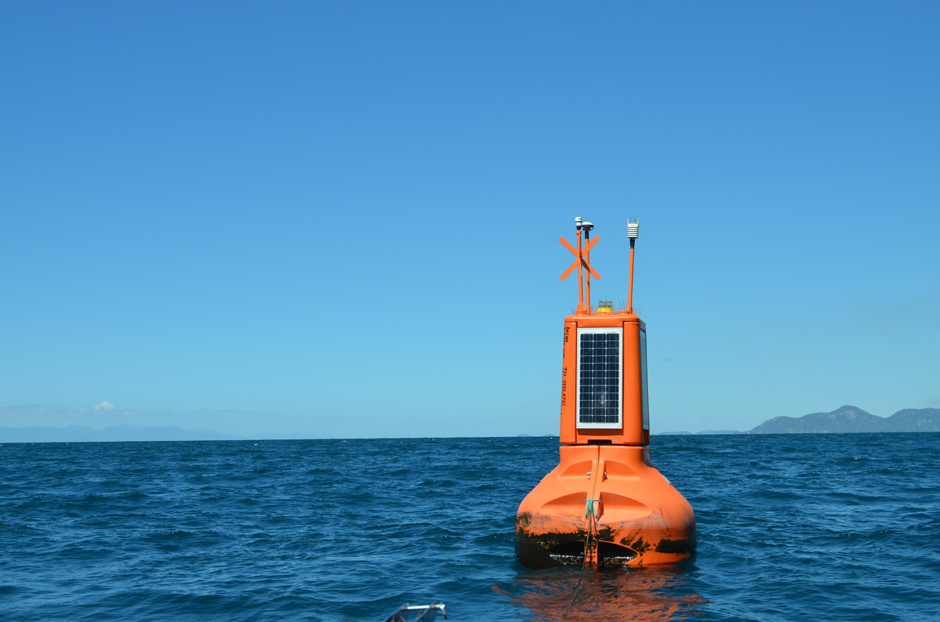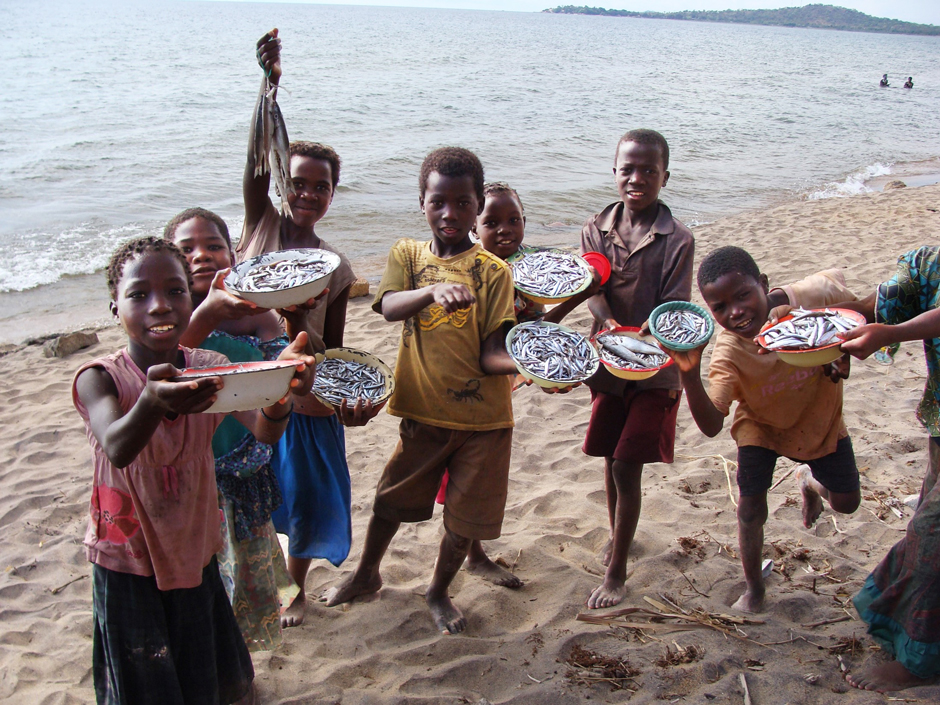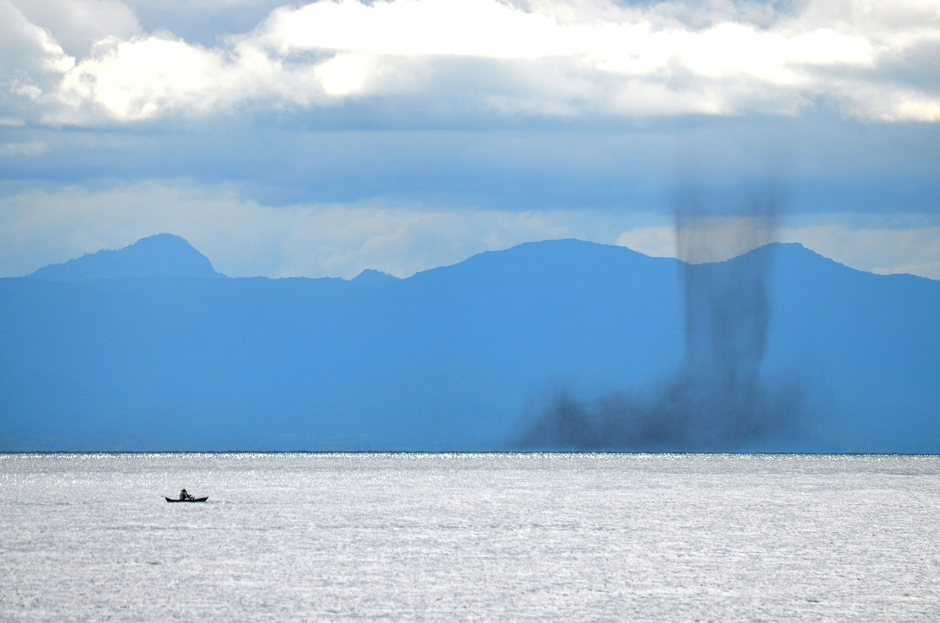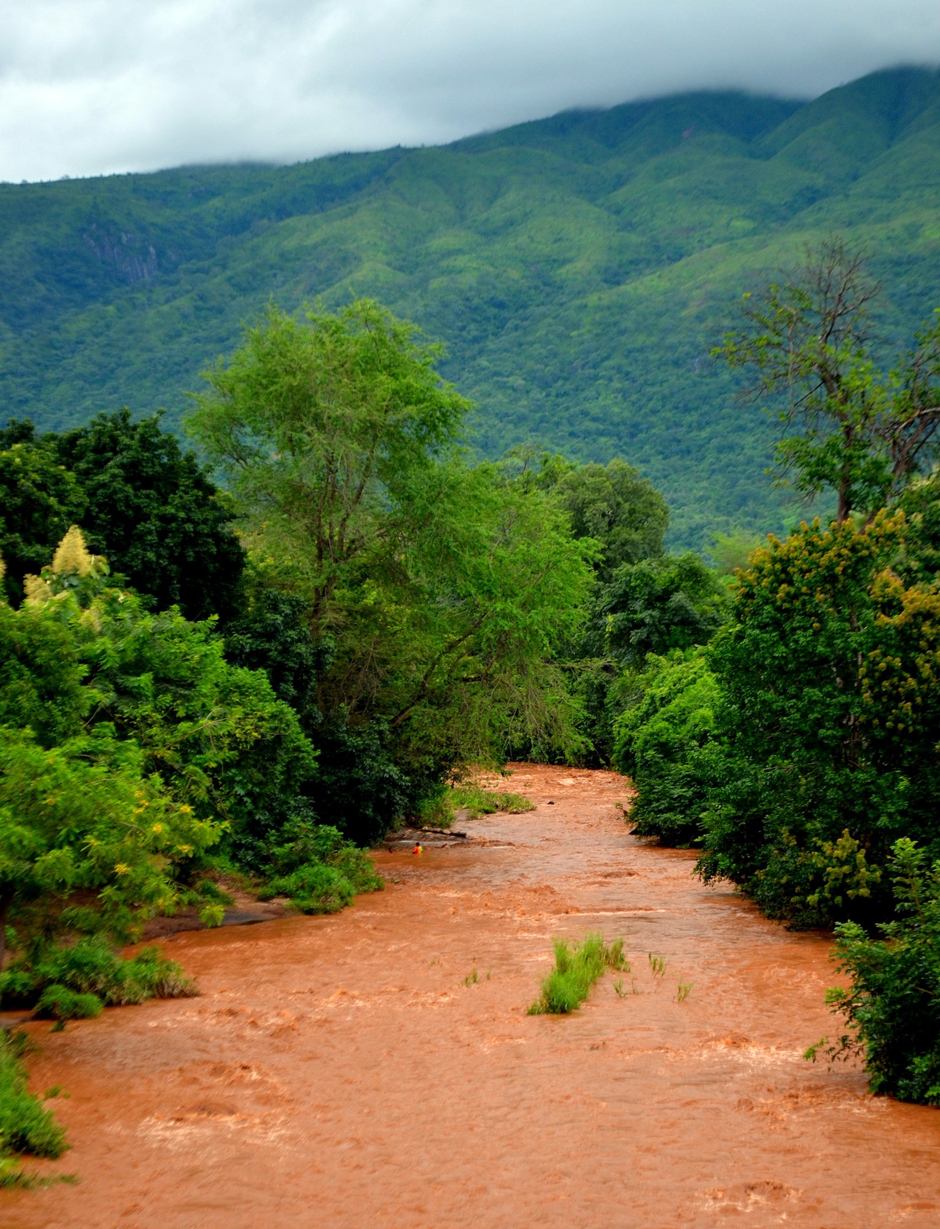Lake Malawi: A Treasure to Protect
 Lake Malawi monitoring buoy (Credit: Harvey Bootsma)
Lake Malawi monitoring buoy (Credit: Harvey Bootsma)Lake Malawi (also known as Lake Nyasa and Lake Niassa) doubles as a Rift Valley Lake and one of the seven African Great Lakes. Due to its unique biodiversity, it’s a great place to conduct limnological studies. Harvey Bootsma is a professor for the School of Freshwater Sciences at the University of Wisconsin-Milwaukee and has had an interest in limnology ever since he was a kid.
Bootsma fondly recalls summer vacations to Georgian Bay, Ontario, “I probably spent as much time in the water as I did out of it.” He continues, “I remember telling myself, ‘I’m going to get a job where I can stay here all the time.’” While Harvey didn’t end up working on Georgian Bay, he was offered a job working on Lake Malawi. He continued working there while completing his Ph.D. While studying Lake Malawi, Bootsma learned about its significance to the culture, health and wellness of surrounding communities.
The Role of Lake Malawi
According to Bootsma, Lake Malawi is used as a mode of transportation, as parts of the massive lake are inaccessible by road due to the rigid, mountainous shoreline that comes with being a Rift Valley lake. The water is also used domestically by those living in the region for drinking, bathing, washing and recreation. Agriculturally, the water is used to irrigate small local farms as well as larger industrial farms, such as sugar plantations. Additionally, the Shire River that flows out of Lake Malawi is “the primary source of electricity for that region,” explains Bootsma. The electricity comes from hydroelectric dams that depend on the lake level remaining high enough to discharge water into the Shire River.
Lake Malawi also serves as a very important source of food and water. Usipa, or lake sardines, are just one example of an abundant fish that is harvested widely for food, as well as for income. Bootsma explains that “Lake Malawi has more species of fish than any other lake in the world,” supplying the region with a wide variety of food and economic opportunities.
The biodiversity of the lake draws a great deal of global attention. In fact, Lake Malawi has been named a World Heritage Site by UNESCO due to its captivating beauty and remarkable aquatic biodiversity. Tourism helps to fuel Malawi’s economy because it brings in foreign exchange currency needed for Malawi’s trade in the global market.

Kids with usipa (Credit: Harvey Bootsma)
Threats to Lake Malawi
The natural world is frequently burdened by human impacts, such as intensive land use and global warming. Lake Malawi and the surrounding population face each of these threats; however, these disturbances can be reduced or even eradicated with water quality monitoring.
Unsustainable practices like overfishing are obvious problems because they threaten the natural biodiversity and productivity of the ecosystem. Agricultural land use also puts pressure on the lake because it can cause heavy soil erosion, which Bootsma explains can dramatically affect water clarity and bring harm to species that depend on visual cues for breeding and other biological processes. When female fish can no longer recognize males of the same species, it can negatively affect their reproductive rates and fecundity, and even result in hybridization and the loss of genetic diversity.
Agriculture also increases the likelihood of nutrient loading in Lake Malawi, which can cause harmful algal blooms. While the lake’s food web relies on algal production, excessive algal growth can lead to a loss of dissolved oxygen from the water once the algae dies and decomposes, restricting the areas where fish can live. Higher nutrient loads can also promote the growth of potentially toxic cyanobacteria, which can cause fish kills and affect human health.
As supported by several decades of data, climate change is undoubtedly warming Lake Malawi. Warmer lake temperatures impact the way the lake’s surface water (the epilimnion) mixes with deeper, phosphorus-rich water (the hypolimnion). Because phytoplankton growth in the epilimnion depends largely on the delivery of nutrients from the hypolimnion, any changes in the lake’s mixing patterns will ultimately affect phytoplankton production in the lake, which will affect fish production and food supply. Warmer lake temperatures may also increase the likelihood of toxic cyanobacteria growth.
Climate change does not just mean warmer temperatures; it is also inspiring changes in rainfall patterns around the world. In Malawi, Bootsma explains that the frequency of cyclones and heavy rainfall events is expected to increase as climate change persists, which would generate even more soil erosion. Bootsma proceeds to explain, “Not only does the erosion negatively affect the lake’s water quality; it also removes important nutrients from the land, reducing soil fertility and therefore negatively affecting crop production.”

Lakefly Emergence from Lake Malawi (Credit: Harvey Bootsma)
How to Mitigate Environmental Stressors
Bootsma believes that one step to identifying and alleviating these environmental stressors is through water quality monitoring. With proper equipment and expertise, Bootsma is confident that a better understanding of how Lake Malawi is responding to these disruptions will improve the ability to develop management strategies that can mitigate the damage caused by these stressors and provide human populations around the lake with the information needed to adapt to change.
Critical components of a water quality monitoring system include sensors on buoys and regular sampling to measure variables such as nutrient and plankton concentrations. The information gained from monitoring programs not only indicates how the lake has changed over time but can also be used to guide the development of numerical models that can help predict how the lake will respond to future stressors.
Bootsma has been providing training to scientists in several Malawi government agencies to establish a monitoring program on Lake Malawi, but Malawi and the other two riparian countries (Mozambique and Tanzania) will need continued support from the international community if they are to develop and sustain an ongoing, effective monitoring program.
Conclusion
Due to the widespread dependence on this lake, local communities strongly support increased monitoring procedures. Bootsma explains that regional students and government scientists are passionate about the need for research and monitoring of Lake Malawi. They understand the importance of this lake and its astounding qualities better than anyone.
Implementing a continuous monitoring program in Lake Malawi could help predict scenarios that may negatively affect the lake and the services it provides. For example, if climate models suggest a period of low rainfall is coming, action could be taken to optimize hydroelectric dams and develop alternative energy sources.
Monitoring will also help to better understand changes that are already occurring in the lake. Bootsma points out that there have been multiple mass fish kills within the lake, and the specific cause is unknown. With an effective monitoring program in place, data could be gathered that may explain what is killing these fish.
Given that Lake Malawi serves millions of people and is home to Earth’s most diverse community of freshwater fishes, protecting and restoring it deserves to be prioritized. The technology that is needed to establish an effective water quality monitoring program exists, but the expense and logistic challenges make it difficult for regional management agencies to realize. Bootsma’s work in Malawi serves as an important reminder that monitoring is essential for the health and protection of regions across the world.

River with heavy sediment load from soil erosion (Credit: Harvey Bootsma)




Carla Fernandes
March 21, 2023 at 4:07 am
Dear Harvey. Thank you so much for looking out for the Lake of the people of Malawi. Your article was interesting and hopefully will encourage a look by the powers that be, into why the fish deaths are happening & a way for implementing a continuous water monitoring program. Am praying for a “shift in thought” to appreciate what a gem we have here as opposed to allowing outsiders to come and explore it !
Henry
March 22, 2023 at 1:49 am
More informative and educative material. Keep on doing the good work
Charles Mphande
March 22, 2023 at 2:49 am
Objectively and passionately written article. Its observations are truthful; and its recommendations worth action by all stakeholders national and international. The unparalleled biodiversity of Lake Malawi offers great opportunity to all individual, organisational, or international parties, according to their needs or interests. As a native who has grown up on the shores of Lake Malawi, this call to protect the lake and its biodiversity, cannot wait for another now.
A..J.
March 22, 2023 at 3:14 am
Very interesting.
I really want to meet other you Bootsma
A.J
Yunus Latif
March 22, 2023 at 9:41 am
Yunus has read all about your wonderful work and it’s finding on the magnificent scenery and lake of starts please respond soon
Made
March 23, 2023 at 12:22 am
This means we need to protect our lake
Chifundo Pondaponda
March 23, 2023 at 9:15 am
We preserve the natural resources like trees to cover other part of the lake for fresh air inside the deep side of the lake .in Order to prevent the loss of fish found dead along the lake .
Chingayipe Titus mnthali
March 23, 2023 at 9:52 am
I love lake malawi
Owen chakhaza
March 23, 2023 at 12:41 pm
Brilliant article! really explains everything in detail and with clarity.
Evans Kalitera
March 24, 2023 at 11:54 am
I love Lake Nyasa, please authorities do all that is required to protect our beautiful Lake Malawi.
Indeed it’s a treasure worth protecting.